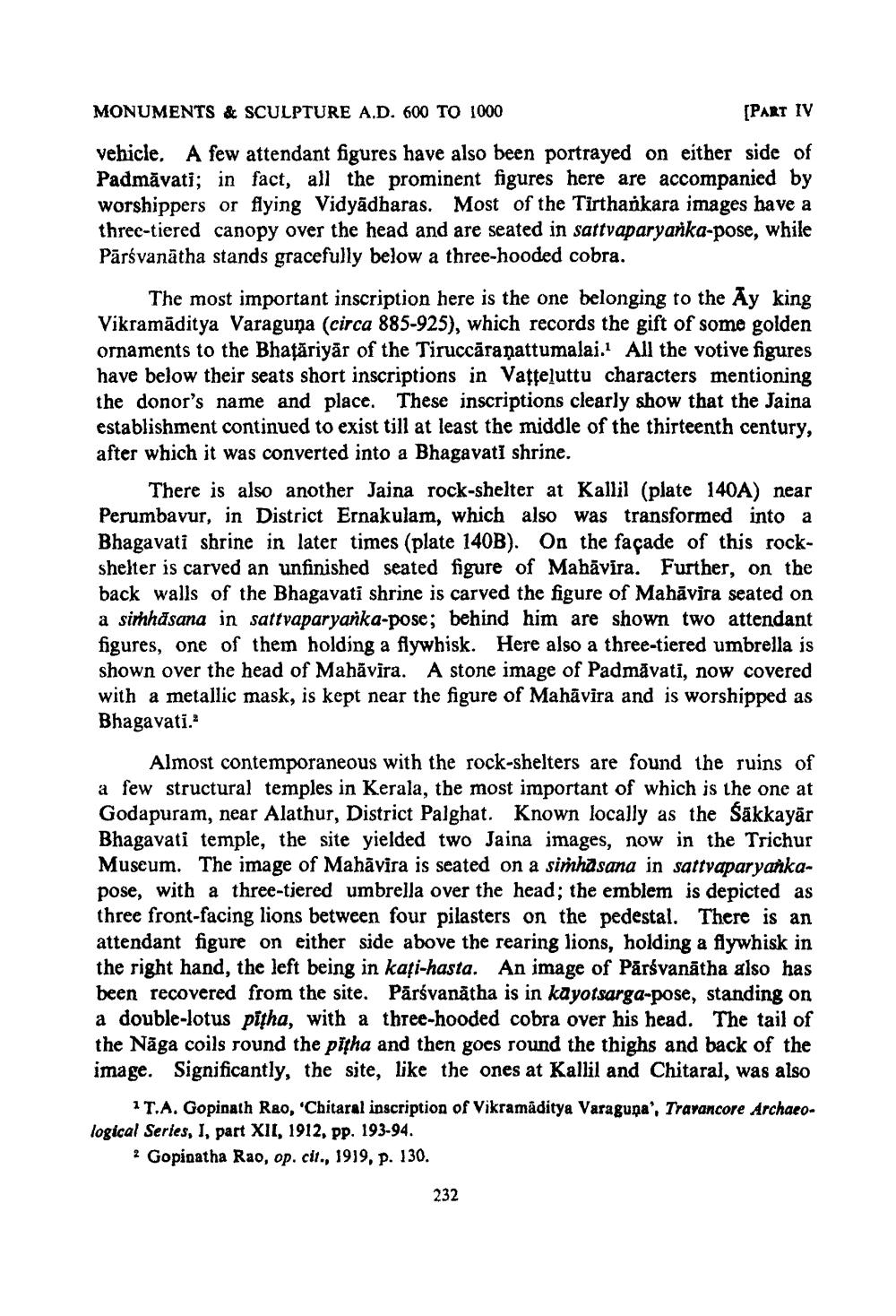________________
MONUMENTS & SCULPTURE A.D. 600 TO 1000
[PART IV
vehicle. A few attendant figures have also been portrayed on either side of Padmavati; in fact, all the prominent figures here are accompanied by worshippers or flying Vidyadharas. Most of the Tirthařkara images have a three-tiered canopy over the head and are seated in sattvaparyarka-pose, while Pārsvanatha stands gracefully below a three-hooded cobra.
The most important inscription here is the one belonging to the Ay king Vikramāditya Varaguņa (circa 885-925), which records the gift of some golden ornaments to the Bhatăriyār of the Tiruccāranattumalai.? All the votive figures have below their seats short inscriptions in Vatteluttu characters mentioning the donor's name and place. These inscriptions clearly show that the Jaina establishment continued to exist till at least the middle of the thirteenth century, after which it was converted into a Bhagavati shrine.
There is also another Jaina rock-shelter at Kallil (plate 140A) near Perumbavur, in District Ernakulam, which also was transformed into a Bhagavati shrine in later times (plate 140B). On the facade of this rockshelter is carved an unfinished seated figure of Mahāvira. Further, on the back walls of the Bhagavati shrine is carved the figure of Mahāvira seated on a sirhhäsana in sattvaparyanka-pose; behind him are shown two attendant figures, one of them holding a flywhisk. Here also a three-tiered umbrella is shown over the head of Mahāvira. A stone image of Padmavati, now covered with a metallic mask, is kept near the figure of Mahāvira and is worshipped as Bhagavati.
Almost contemporaneous with the rock-shelters are found the ruins of a few structural temples in Kerala, the most important of which is the one at Godapuram, near Alathur, District Palghat. Known locally as the Sākkayār Bhagavati temple, the site yielded two Jaina images, now in the Trichur Museum. The image of Mahāvira is seated on a simhasana in sattvaparyankapose, with a three-tiered umbrella over the head; the emblem is depicted as three front-facing lions between four pilasters on the pedestal. There is an attendant figure on either side above the rearing lions, holding a flywhisk in the right hand, the left being in kați-hasta. An image of Pārsvanātha also has been recovered from the site. Pārsvanátha is in kayotsarga-pose, standing on a double-lotus pitha, with a three-hooded cobra over his head. The tail of the Nāga coils round the pitha and then goes round the thighs and back of the image. Significantly, the site, like the ones at Kallil and Chitaral, was also
11.A. Gopinath Rao, 'Chitaral inscription of Vikramaditya Varagupa', Travancore Archaeological Series, I, part XII, 1912, pp. 193-94.
2 Gopinatha Rao, op. cit., 1919, p. 130.
232




